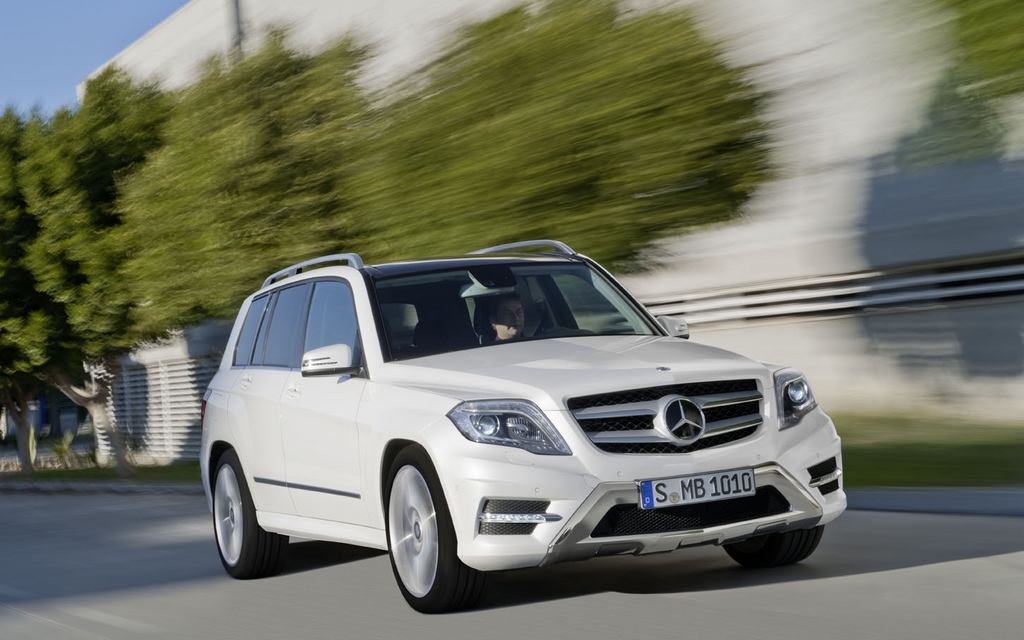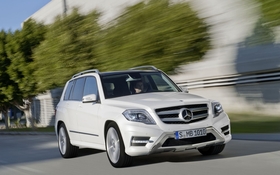2013 Mercedes-Benz GLK 250 BlueTec: Diesel, at last!

| Strong points |
|
|---|---|
| Weak points |
|
When the GLK was unveiled on the Canadian market in 2009, it was only offered with a 3.5-litre V6. Meanwhile, it was also sold in Europe with a four-cylinder diesel, but Mercedes-Benz didn’t feel it was the right time to market this version on our continent. Four years later, the GLK is getting its first makeover, though that term might be a bit of an overstatement since the aesthetic changes are very subtle. In fact, you’ll need a keen eye to pick out the changes made to the exterior of the 2013 model.
Mercedes-Benz is using the same strategy that it used on many other models when environmental rules forced it to modify its engines. At the same time, it made a few aesthetic changes as well.
- Also: 2013 Mercedes-Benz GLK350 4MATIC: Baby G-Class Stands Tall Amongst Compact Luxury SUVs
- Also: The End Of Diesel In France?
Minor changes
Company stylists decided to keep the GLK’s shape, as most people seem to like it. Interestingly, they drew inspiration from the G-Class to design the body, which explains the square front end, the relatively flat sides and the abrupt tail end. This year, the lights are new, the bumper has been redesigned and the lower protective shield features a contrasting colour. Moreover, the air intakes are larger than before. At the rear, they have redesigned the lights, which now use fibre optics, and the bumper has also been tweaked. Finally, the roof rack bars are now made of aluminum. While the version with the 3.5-litre V6 comes factory standard with the AMG Sport Design Package, this package is optional on the GLK 250 BlueTec diesel.
In the passenger compartment, the dashboard has been transformed. You’ll immediately notice the use of circular air vents inspired by the SLS super sports car. The three-spoke steering wheel is brand new and the dials and gauges have a unique design. The shifter is now on the steering column instead of on the central console. It’s a trendy little electronic shift control. But the biggest change is the cruise control button, now integrated with the turn signal lever. Some may see this as little more than a detail, but you have to have driven a Mercedes-Benz with these two levers one above the other to truly appreciate the transformation. As you’d expect with one of this brand’s cars, the quality of the materials and finish is impeccable.
More power, reduced fuel consumption
The V6 engine is back, but this 3.5-litre now produces 302 horses, 34 more than the previous version. That’s a significant increase, made possible by direct fuel injection. Not only does it have more power, but Mercedes-Benz is also claiming 15% lower fuel consumption. Both the V6 or diesel are paired with a seven-speed automatic gearbox, which Mercedes has been using for several years.
For the Canadian market, the good news is that the 2.2-litre four-cylinder diesel engine is now available. It features 190 horsepower and an impressive 369 lbs-ft of torque. This new version should be sold here at the beginning of autumn. Note that this engine has been used in Europe for almost five years now and its reliability has never been an issue. According to the figures provided by Mercedes-Benz, fuel consumption should range from 6.0 to 7.0 litres per 100 km. However, while the gasoline engine has the Start/Stop system that cuts the engine when the car is stopped, this device is not available on the diesel version.
Both versions are equipped with electromechanical power steering known as Direct-Steer. Among its numerous functions, the STEER CONTROL is worth mentioning. It intervenes when the driving aid systems diagnose unstable conditions that can be rectified using simple steering movements. The system calculates the amount of torque needed for the conditions, which is used by the electronic steering assistance. For oversteering, STEER CONTROL signals to the driver, using the steering wheel, to turn the wheel the other way until the vehicle is once again stable. For understeering, active steering warns you to increase the turning angle. Even if the driver ignores the recommendations of the STEER CONTROL active steering, the system foresees a sufficient breathing room to stabilize the vehicle with the help of the dynamic handling regulation devices, such as ADAPTIVE BRAKE, ESP or even the 4-ETS stability control. STEER CONTROL only makes recommendations; ultimately it’s up to the driver to make the final decisions.
On the road
During the presentation of the new GLK, Mercedes-Benz brought us to the La Clusaz ski resort in France to test out the vehicle on backroads and to take it for a little off-road test drive. Suffice it to say, the V6 has all the same qualities as the current version, except that it’s faster and performs better while consuming less fuel. I was particularly curious to get behind the wheel of the diesel version.
As for performance, for comparison’s sake, the GLK diesel goes from 0-100 km/hr in 8.0 seconds, 1.5 seconds more than with the V6 gas engine. Its very generous torque at low speed helps guarantee linear accelerations and good pick-up. What’s more, the engine soundproofing is noteworthy and you can barely hear the purr of the engine.
I had the opportunity to do a lap on a specially laid out course to test this SUV’s off-road capabilities, and it turned the experience was overwhelmingly positive. In any case, very few GLK owners will drive their vehicles on similar trails. This Mercedes-Benz isn’t designed to take on impassable roads, but its off-road handling is impressive.
Once we got back on the pavement, as with the GLK 350, the handling and driving pleasure were excellent. Overall, this diesel version will make a lot of people happy.











